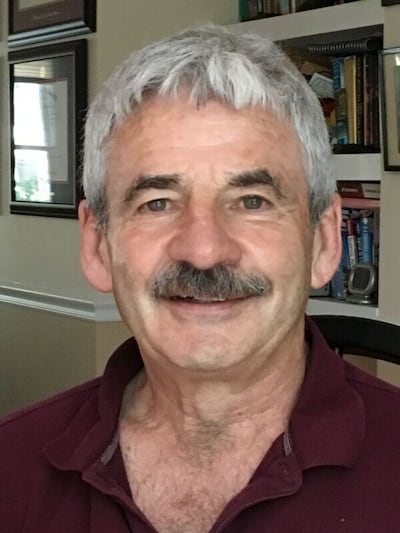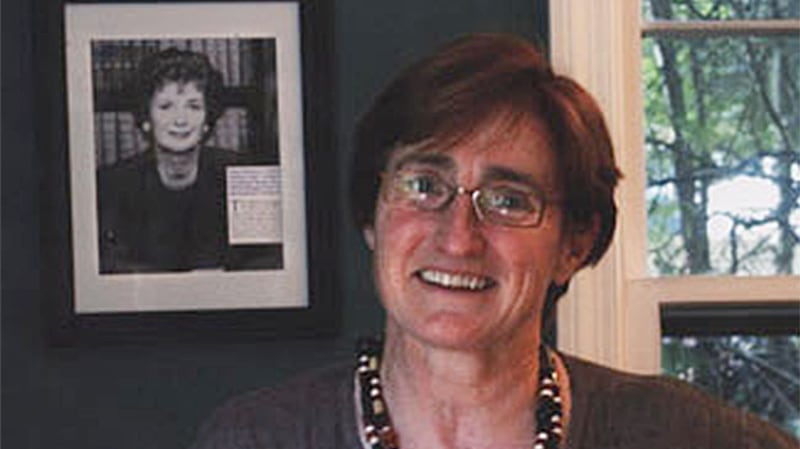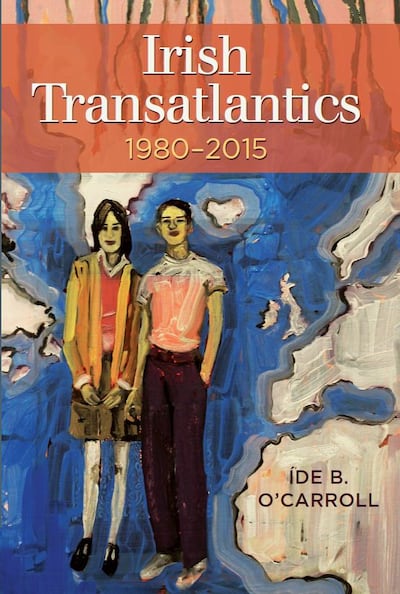What Irish migrant Gerry Brennan most remembers about his first few months in America in the 1980s were two extremes he simply hadn't anticipated: the fierce heat that sapped his energy as he painted houses in 90-degree weather, and the cost of calling his mother at home, over $3 a minute.
He learned to adjust to the heat. His mother in Kildare waited by coin box telephone each Sunday for his call. Like so many 1980s New Irish in America, Gerry was “undocumented”. She worried about him. They both adapted to conditions and used the resources available to remain in touch across the Atlantic.

Fast-forward several decades into the 2000s. Gerry has a green card and a thriving construction business in Boston. He could have returned to Ireland in the 1990s, like so many other New Irish in America. Instead, for decades he’s maintained connections to both Ireland and America with the aid of each technological advance - email, texts, Skype, social media.
He owns a house in Ireland where he brings his family every year. His children, all dual citizens, have grown close to their Irish cousins via social media, something he expected, but they’re still a little surprised by the diversity they encounter in Kildare - people from Eastern Europe, Africa, Asia, members of Ireland’s immigrant population. He and his family learned to adapt to a changed place ‘at home’ just as he learned to adapt to life in America. They all feel as if life can continue “here and there”.
Gerry’s capacity to sustain personal and professional ties that transcend national borders marked the emergence of extensive transnationalism in Irish-US migration. Since the US is no longer the long-distance destination for departing Irish, this generation’s story is unique - it will never be replicated.
In my book, Irish Transatlantics, 1980-2015, I use the idea of transatlantic to illustrate a range of modern Irish migrant experiences that bridge both places - 20 stories in all - most drawn from the 84 interviews I conducted in Ireland and America between 2013 and 2016 for the Archives of Irish America at New York University.
In addition to Gerry's story, I include profiles of Rena Cody and Greg Glynn, because they advocated tirelessly for US immigration reform on behalf of the New Irish undocumented in America (both returned in 1990s). Their advocacy facilitated Tyrone-born Catherine Kelly (in New York) and Donegal-born Jacksie Daly (in Boston) to come out of the shadows, to become legal immigrants in the US.
Catherine went on to study at Columbia and become a professor. Jacksie stayed in in Boston, building his construction business, while his wife and child returned to live Donegal. Life continued “here and there” for them, too.
Sense of belonging
The people I profile - artists, academics, entrepreneurs, carers - describe how they lived through a period of major structural changes, economic downturn and upswings that influenced their mobility, their sense of belonging and ultimately where they lived.
In the 1980s, when they arrived into neighbourhoods like Yonkers and Dorchester, populated mainly by the descendants of Famine emigrants, they encountered representations of Irish identity in America that suggested a different place to the county they had grown up in. They were bemused and bewildered by the green beer, the profusion of shamrocks, the leprechauns, the slogans about the "Fighting Irish".
Equally, those New Irish who returned to Celtic Tiger Ireland - for lifestyle reasons, to work, to raise their children here, to be close to aging parents - were unsettled by and unprepared for what they encountered. Ireland had become a place of arrivals with immigrants from many nations seeking the same chances they had sought in America. The 1980s Irish emigrants had to adjust to what it meant to be Irish in America, and now they had to do so, again, back home in Ireland.

I wanted to chart a story of this changed migration circuit, the end of Irish emigration to America as we have known it, and the emergence of extensive transnationalism. I wanted to document how people who were part of this unusual story made sense of and understood their experiences. They adapted in response to the changed circumstances and became active agents in a radically altered global environment, used technology to stay in touch in real time, and used dual Irish and US citizenship to aid their mobility.
Diversity
It's a different story now. I argue that the flow of Irish emigrants to America as we have known it is over and will never be again. Many 1980s migrants entered the US on visitors' visas fully intending to work as undocumented, as Gerry had done. Once in the US, they catalyzed a political movement, the Irish Immigration Reform Movement (IIRM), to successfully reform US immigration in their favour. Both steps seem unimaginable now. Some programmes may facilitate short-term residency like J-1 student visas (in danger), H-1 work visas (under scrutiny) - but these, and even the terms of US visitor's visas, are subject to change.
The undocumented Irish, estimated to number somewhere between 10,000 to 50,000 out of 11.5 million undocumented in total, will not be given any special deal in a Trump’s America. With a diminishing presence of the Irish in America (32.7 million claimed Irish heritage in 2015, down from 33 million), I believe there is neither the political capital nor will to replicate the immigration reforms of the 1990s.
In addition, future Irish-born migrants to America will reflect the rich diversity of Irish society, where “foreign nationals” from 200 different countries comprise over a half million of the Republic’s 4.6 million. What it means to be Irish “here and there” has become even more complicated.

People like Gerry and the other Irish-born migrants in my book, Irish Transatlantics, 1980-2015, lived at a time when humans transformed the way we interact with one another across distance. There was no compass to guide them, to help them decide what to do, where to live, how to support one another, how to establish new ways of being linked to people and processes in Ireland and America, to navigate a world radically altered by the possibilities of transatlantic connections.
Irish transatlantics were Ireland’s first transnational pioneers whose experience may be valuable to the global Irish living lives across the new long-distance circuits between Ireland, Canada and Australia.
Íde B. O'Carroll is a social researcher and writer who lives in Amherst, Massachusetts (www.ocainternational.com). Visiting Scholar at Ireland House, NYU from 2013-2017, she currently teaches at UMass Amherst. Irish Transatlantics, 1980-2015 published by Cork University Press, 2018 can be purchased on Amazon.















